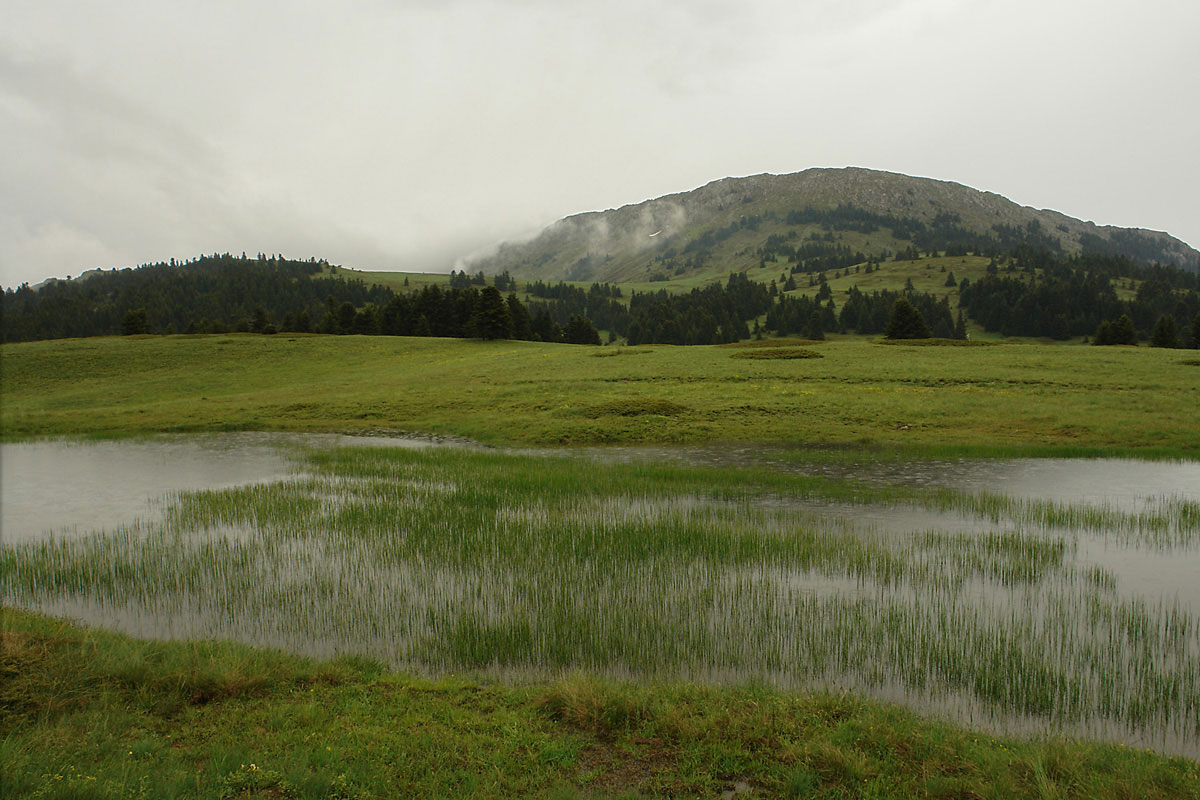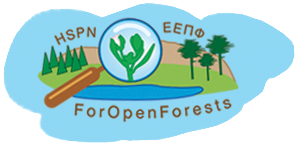Main menu
Conservation of priority forests and forest openings in "Ethnikos Drymos Oitis" and "Oros Kallidromo" of Sterea Ellada, LIFE11 NAT/GR/1014
Actions
Action A.2: Geo-environmental, hydrogeological and geochemical study of the areas of temporary ponds (3170*)

Mediterranean temporary ponds are, by definition, wetlands that present a seasonal hydrologic period. Ecosystem functions and, consequently, the biota of the ponds depend strongly on the hydrological status. The characteristic flora and fauna species are highly specialised and vulnerable to any changes in hydrology. The establishment of a quantitative assessment of the hydrological functions and the identification of potential direct or indirect modifications require frequent monitoring of the components of the water cycle, and of their effects on the seasonal and interannual variations of the pond water level. In addition, the biological phenomena of the ponds strongly depend on the hydric state and geochemistry of the sediments, the water chemistry, and their interactions. These are also controlled by flooding/drying cycles through soil redox potential changes.
Action A2 consists in a comprehensive study of the geological and hydrogeological characteristics of the temporary ponds on Mt. Oiti (at Leivadies, Greveno, Louka, and north of Trapeza) and on Mt. Kallidromo (at Nevropoli, east of Nevropoli, and at Souvala) in order to describe the surface micro-geomorphology, the underground geological setting, the hydrological conditions and the geochemistry of the ponds. The components of the water cycle of the ponds (geology and geomorphology of the catchment area, rainfall and evapo-transpiration, relationship with underground water) will be investigated. The water cycle interaction with the landscape and the geological basement will be described, the areas of erosion and deposition within the catchment area will be defined, and the interannual changes will be quantified.
A complete base study (points 1 to 6 below) will be made during the first year of the project. This will be followed up in the second year by monitoring of the hydrological cycle (points b to d below) and, should the local situation prove that they are of priority, of water and sediment quality (points 5 and 6 below). The study will include:
- The geological and geomorphological characteristics of the catchment area of the ponds, including mineralogy and geochemistry of the bedrock, the bottom sediments and the efflorescence deposits [evaporites], mainly formed at the lake margins during dry periods. Existing data, e.g. geological and pedological maps will be collected and supplemented by field observations and measurements supported by remote sensing data interpretation.
- Geophysical surveys with electrical resistivity tomography. Through this procedure the geological and hydrogeological conditions will be identified and defined (geophysical stratigraphy, subsurface relief, identification of the hydrogeological regime, etc.).
- Bathymetry of the pools and topography of the surrounding areas using state of the art topographic equipment (DGPS and Real Time Kinematics) and measurement of surface water levels.
- Climatology data, including collection of both historical and current data from the closest existing observation networks and current data throughout the duration of the project collected from in situ meteorological stations. Two automatic meteorological stations will be established on three-meter-high towers, one at each mountain at the most appropriate location regarding the reliability of the measurements. The stations will consist of rain gauge, thermometer, hygrometer, wind anemometer, sunshine recorder and barometer, powered by solar panels and capturing continuous measurements in a data logger.
- Water quality assessment including sampling for: i) nutrients (total phosphorus, total dissolved phosphorus, phosphate, total nitrogen, total dissolved nitrogen, nitrate, nitrite and ammonium) analysed by colorimetric methods; ii) chemical characterisation by measuring major element ions using Atomic Absorbance Spectroscopy [AAS], [i.e. magnesium, calcium, sodium, bicarbonate, sulphate], but also trace elements content using Graphite Furnace Atomic Absorption Spectroscopy [GFAAS] and Inductive Coupled Plasma Mass Spectroscopy [ICP-MS] [i.e. arsenic, chromium, boron, nickel, strontium, lead, zinc, copper, iron]; iii) in situ measurements of the physical parameters including pH, Eh, electrical conductivity, temperature, Total Dissolved Salts [TDS], Diluted Oxygen with special equipment; iv) measurements of biogeochemical parameters including Chemical Oxygen Demand [COD], Biogeochemical Oxygen Demand [BOD], Total Organic Carbon [TOC] in dry and wet periods. The frequency of the sampling depends on the flooding periods.
- Soil sediment assessment including: i) recording of settling and re-suspension rates, iron, silica, aluminum, phosphorus, sodium, potassium content in surface sediment and suspended soil, using X-Ray Florescence Spectroscopy [XRF]; ii) soluble and insoluble mineral content of the soil [evaporitic salts such as gypsum, thenardite, trona, epsomite, hydromagnesite] using X-Ray Defraction Spectroscopy [XRD], Scanning Electron Microscopy [SEM] and microprobe analysis; iii) organic matter content and different sedimentary fractions with certified equipment.
In order to draw specifications for management actions (actions A3, A4, A6, and A8) and monitor their results (action D1) on the ponds it is necessary to establish the base reference hydrogeological status (initial situation), and the factors that influence it. The results of the study will contribute to the selection of the minimum required parameters to be used as indices for both operational (action D1 and after-LIFE) and surveillance (after-LIFE) monitoring. Also, this data will be used for the interpretation of the interannual variation of the biotic communities of the ponds (Action A3). Finally, the knowledge of the dynamic changes of the geo-environment of the ponds is an invaluable tool for conservation management planning, and will help in understudying and coping with the effects of climate change. Follow up monitoring for a second year is necessary in order to obtain an indication of the interannual variations, which may be significant due to the dependence of hydrogeology on meteorological conditions.
In short, Action A2 is necessary in order to understand how the temporary ponds “work” in terms of temporal and spatial water availability and quality, and what the magnitude of annual changes in these is. Lack of this solid basis may reduce the chances for long term success of the concrete conservation actions. The data will be used by preparatory actions A3 (and thus A6), A4, and A8 in order to draw specifications for C actions.
In detail, action A2 will provide data in order to:
- Select the appropriate time and exact locations for pilot restoration of biotic communities (action C4) and for the enhancement of the population of Veronica oetaea (action C2),
- Design the erosion control measures (action C4),
- Plan the grazing regime of ponds (action C3),
- Plan fencing of ponds (actions C1 and C3),
- Identify the key elements of the hydrological regime of the ponds and detect currently unknown threats, which is vital in designing long term management (action F4).
-
A report including:
-
Geo-environmental regime and definition of the dynamic landscape procedures of the surrounding areas.
-
Detailed analysis of the subsurface basement and definition of the impermeable strata structure which contribute to water accumulation.
-
Detailed topographical analysis including the dry and wet period changes, but also the micro-changes at the bottom of the ponds during the project.
-
Definition of the collected water response to the micro-climate conditions.
-
Time-series for all the water element contents and relationship extraction with the meteorological time-series.
-
Identification and interpretation of the relationship between the geochemistry - hydrochemistry - vegetation for each of the ponds and the areas between the two mountains.
-
Specification of a monitoring protocol for hydrogeological indices for action D.1 and for after-LIFE monitoring.













